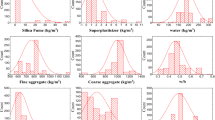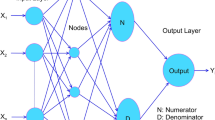Abstract
The main goal of grade control is the prediction of material destination based on all available data. The common approach to grade control is based on estimated maps obtained through kriging, inverse distance estimation, or nearest neighbor; however, capturing complex relations from data is not straightforward with such methodologies. Machine learning algorithms provide flexibility and simplicity when integrating data and incorporating complex patterns that cannot be easily accounted for with geostatistical workflows, leading to higher model accuracy and promotes better decision making. The methodology implemented in this case study uses machine learning algorithms to model copper grade, which is incorporated in an intrinsic collocated co-kriging framework as secondary information to generate a final grade model. The workflow presented (1) is not more difficult to implement compared to ordinary kriging, (2) allows for automatic data incorporation in a geostatistical framework and (3) improves grade control decision-making when compared to common approaches. The workflow is demonstrated on 10 blasts from Teck Resources Limited’s Carmen de Andacollo copper mine in Chile and is compared to ordinary kriging and inverse distance. Two machine learning algorithms are implemented and evaluated for grade control decision-making. The algorithms considered are (1) an ensemble of radial basis function neural networks and (2) an ensemble of support vector regressors. These two algorithms are used to obtain an exhaustive secondary model used in copper grade estimation. Incorporating radial basis function neural networks improves the quality of the classified model, with average classification accuracy of 89% over 10 blasts and can reduce the volume of misclassified material on average over 10 blasts by 7% and 1% when compared to inverse distance, ordinary kriging and support vector regressor approach, respectively.













Similar content being viewed by others
Data Availability
The data that support the findings of this study were provided by Teck Resources Limited but restrictions apply to data availability, which were used under license for the current study, and are not publicly available.
Code Availability
The code used to develop the case study is available from the Centre for Computational Geostatistics but restrictions apply to code availability, which were used under license for the current study. Code is available from the authors upon reasonable request and with permission of the Centre for Computational Geostatistics.
References
Aggarwal, C. C. (2018). NNs and deep learning. Springer International Publishing.
Almeida, A. S. (1993). Joint Simulation of multiple variables with a Markov-type coregionalization model. PhD Thesis. Stanford University.
Almeida, A. S., & Journel, A. G. (1994). Joint simulation of multiple variables with a Markov-type coregionalization model. Mathematical Geology, 26, 565–588.
Awad, M., & Kahnna, R. (2015). Efficient learning machines: Theories, concepts, and applications for engineers and system designers. Apress Open.
Babak, O., & Deutsch, C. V. (2009). Improved spatial modeling by merging multiple secondary for intrinsic collocated cokriging. Journal of Petroleum Science and Engineering, 69, 1.
Breiman, L. (1994). Bagging predictors. Technical report no. 421. University of California at Berkeley.
Chandra, A., & Yao, X. (2006). Ensemble learning using multi-objective evolutionary algorithm. Journal of Mathematical Modelling and Algorithms, 5, 417–445.
Chatterjee, S., Bandopahyay, S., & Muchaca, D. (2010). Ore grade estimation using a genetic algorithm and clustering based ensemble neural networks. Mathematical Geosciences, 42, 309–326.
Chen, L., Ren, C., Li, L., Wang, Y., Zhang, B., Wang, Z., & Li, L. (2019). A comparative assessment of geostatistical, machine learning, and hybrid approaches for mapping topsoil organic carbon content. ISPRS International Journal of Geo-Information, 8(4), 174.
Costa, J. F. C. L. (1997). Developments in recoverable reserves estimation and ore body modelling. PhD thesis. University of Queensland. Australia.
Dai, F., Zhou, Q., Lv, Z., Wang, X., & Liu, G. (2014). Spatial prediction of soil organic matter content integrating artificial NN and OK in Tibetan Plateau. Ecological Indicators, 45, 184–194.
Deutsch, J. (2015). Variogram program refresh. 17th CCG Annual report, Alberta, Canada.
Dimitrakopoulos, R., & Godoy, M. (2014). Grade control based on economic ore/waste classification functions and stochastic simulation: Examples, comparisons and applications. Mining Technology, 123(2), 90–106.
Dowd, P. A., & Saraç, C. (1994). A NN approach to geostatistical simulation. Mathematical Geology, 26, 491–503.
Gangappa, M., Mai, C. K., & Sammulal, P. (2017). Techniques for machine learning based spatial data analysis: Research directions. International Journal of Computer Applications, 170(1), 9–13.
Hengl, T., Nussbaum, M., Wright, M. N., Heuvelink, G. B. M., & Graler, B. (2018). Random Forest as a generic framework for predictive modeling of spatial and spatio-temporal variables. PeerJ, 6, e5518.
Isaaks, E. H. (1990). The application of Monte Carlo methods to the analysis of spatially correlated data. PhD thesis. Stanford University, Unites States of America.
Jafrasteh, B., & Fathianpour, N. (2017). A hybrid simultaneous perturbation artificial bee colony and back-propagation algorithm for training a local linear radial basis neural network on ore grade estimation. Neurocomputing, 235, 217–227.
Jafrasteh, B., Fathianpur, N., & Suarez, A. (2018). Comparison of machine learning methods for copper ore grade estimation. Computational Geosciences, 22, 1371–1388.
Journel, A. (1999). Markov model for cross-covariances. Mathmatical Geology, 31, 955–964.
Kanevski, M., Parkin, R., Pozdnukhov, A., Timonin, V., Maignan, M., Demyanov, V., & Canu, S. (2004). Environmental data mining and modeling based on machine learning algorithms and geostatistics. Environmental Modeling and Software, 19(9), 845–855.
Kapagerdis, I. K. (1999). Application of NNs systems to grade estimation from exploration data. (PhD). University of Nottingham.
Larrondo, P., Neufeld, C. T., Deutsch, C. V. (2003). VARFIT: A program for semiautomatic variogram modeling. 5th CCG Annual report. Alberta, Canada.
Li, S., Sari, Y. A., & Kumral, M. (2020). Optimization of mining-mineral processing integration using unsupervised machine learning algorithms. Natural Resources Research, 29, 3035–3046.
Ma, Z., Wang, P., Gao, Z., Wang, R., & Khalighi, K. (2019). Ensemble of machine learning algorithms using the stacked generalization approach to estimate the warfarin dose. PLoS ONE, 13(10), e0205872.
Maniar, H., Srikanth, R., Kulkarni, M. S., Abubakar, A. (2018). Machine Learning methods in geoscience. Society of Exploration Geophysicists. International Exposition and 88th Annual Meeting. https://doi.org/10.1190/segam2018-2997218.1
McCulloch, W. S., & Pitts, W. (1943). A logical calculus of the ideas immanent in nervous activity. Bulletin of Mathematical Biophysics, 5(4), 115–133.
Park, N. (2019). Geostatistical integration of field measurements and multi-sensor remote sensing images for spatial prediction of grain size of intertidal surface sediments. Journal of Coastal Research, 90, 190–196.
Pedregosa, F., Voroquaux, G., Gramfort, A., Michel, V., Thirion, B., Grisel, O., & Duchenary, E. (2011). Scikit-learn: ML in python. Journal of ML, 12(85), 2825–2830.
Raschka, S. (2018). Model evaluation, model selection, and algorithm selection in machine learning. Technical report, University of Wisconsin-Maddison. https://arxiv.org/1811.12808
Samanta, B. (2010). Radial basis function network for ore grade estimation. Natural Resources and Research, 19(2), 91–102.
Samson, M., & Deutsch, C. V. (2021). A hybrid estimation technique using elliptical radial basis neural networks and cokriging. Mathematical Geosciences. https://doi.org/10.1016/j.ins.2017.10.049
Schapire, R. E. (1990). The strength of weak learnability. Machine Learning, 5(2), 197–227.
Tahmasebi, P., & Hezarkhani, A. (2012). A fast and independent architecture of artificial NN for permeability prediction. Journal of Petroleum Science and Engineering, 86, 118–126.
Todeschini, R., Ballabio, D., Consonni, V., Sahigara, F., & Filzmoser, P. (2013). Locally centred Mahalanobis distance: A new distance measure with salient features towards outlier detection. Analytica Chimica Acta, 787, 1–9.
Vapnik, V. N. (1995). The nature of statistical learning theory. Springer.
Vapnik, V. N. (1998). Statistical learning theory. Wiley.
Vasylchuk, Y. V., & Deutsch, C. V. (2018). Improved grade control in open pit mines. Mining Technology, 127(2), 84–91.
Vasylchuk, Y. V., & Deutsch, C. V. (2019). Optimization of surface mining dig limits with a practical heuristic algorithm. Mining, Metallurgy and Exploration, 36(4), 773–784.
Verly, G. (2005). Grade control classification of ore and waste: A critical review of estimation and simulation-based procedures. Mathematical Geology, 37, 451–475.
Walch, A., Castello, R., Mohajeri, N., Guinard, F., Kanevski, M., & Scartezzini, J. L. (2019). Spatio-temporal modelling and uncertainty estimation of hourly global solar irradiance using extreme learning machines. Energy Procedia, 158, 6378–6383.
Witten, I. H., Frank, E., & Hall, M. A. (2011). Data mining – practical machine learning tools and techniques (3rd ed.). Morgan Kaufman Publishers.
Witten, I. H., Frank, E., Hall, M. A., & Pal, C. J. (2017). Ensemble learning. Data mining (4th ed.). Springer.
Wolpert, D. H. (1992). Stacked generalization. Neural Networks, 5(2), 241–259.
Xu, W., Tran, T. T., Srivastava, R. M., & Journel, A. G. (1992). Integrating seismic data in reservoir modelling: The collocated cokriging alternative. Society of Petroleum Engineers, pp. 833–842.
Funding
The authors would like to thank the MITACS Accelerate program, Teck Resources Limited and the University of Alberta for funding and supporting the research that led to the results presented.
Author information
Authors and Affiliations
Corresponding author
Ethics declarations
Consent for Publication
The authors give consent for the publication of identifiable details, which can include figures, tables and results within the text to be published in the Natural Resources and Research Journal.
Rights and permissions
About this article
Cite this article
da Silva, C.Z., Nisenson, J. & Boisvert, J. Grade Control with Ensembled Machine Learning: A Comparative Case Study at the Carmen de Andacollo Copper Mine. Nat Resour Res 31, 785–800 (2022). https://doi.org/10.1007/s11053-022-10029-8
Received:
Accepted:
Published:
Issue Date:
DOI: https://doi.org/10.1007/s11053-022-10029-8




